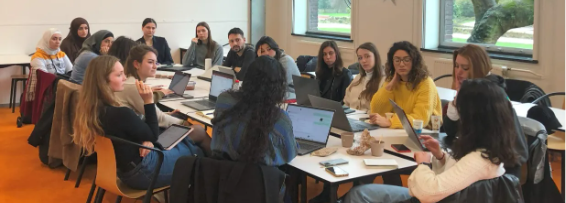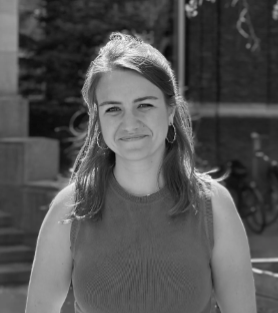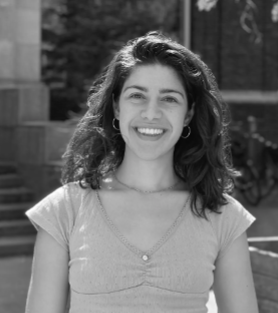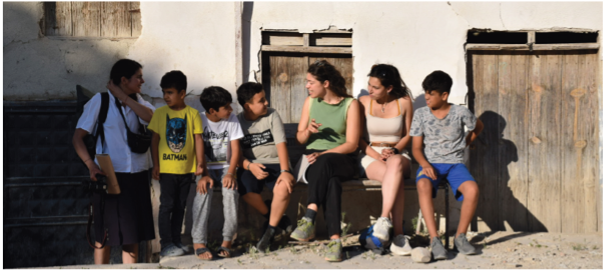Stories of Five TU Delft Education Teams
Here at TU Delft, we have many wonderful education teams that, each in their own innovative way, collectively contribute to the improvement of the education at our university. The Education Team Award was created to celebrate and reward these efforts. Last year, five education teams were nominated for the Education Team Award 2023. :
- The Architectural Recovery Team (ART)
- The Modelling, Uncertainty and Data for Engineers Team (MUDE)
- The Pre-University Chemistry MOOC Team (PUCH MOOC)
- The Computer Science Engineering Teaching Team (CSETT)
- The Modelling Courses Team of the Bachelor of TPM
In a previous article, we spotlighted the strengths of these education teams.[1] In this article series, we take a step closer and discover each education team as they share with us their story, including both the challenges they faced and the achievements they are proud of.
This time we meet the Architectural Recovery Team or ART, a student-driven initiative from the faculty of Architecture and the Built Environment.

#1 The story of the Architectural Recovery Team or ART
ART is a student-driven initiative. Their mission is to empower earthquake-affected communities through collaborative innovation, aiming to provide safe and sustainable homes.[2] Co-founders Meriç Kessaf and Leyla van der Waarde reflect on the beginning of the team. The idea of the Architectural Recovery Team first arose after the devastating earthquakes in Turkey and Syria in February 2023. At the time, Meriç was just about to start on her MA graduation project and Leyla just finished following the EXTREME course: a MA course on integral design in extreme environments taught at the faculty of Architecture and the Built Environment. After the earthquakes, many students felt a strong urge to do something, to help out. But there was no existing structure or programme in place for them to help them concentrate their efforts. As coordinator of the EXTREME course, Job Schroen was very much willing to brainstorm, together with Leyla, Meriç and others about what they could do. This invitation enabled the students to take responsibility; it created an opening and the right momentum “and that is how ART started”, Leyla said.

Leyla van der Waarde

Meriç Kessaf
In the beginning, it was very chaotic. We were with a group of about 40 people from different faculties and everybody was working on different things.
Meriç Kessaf
ART started with a large group of students from different faculties, but also counts among its members teachers, PhDs and practitioners (both architects, civil engineers and urbanists). That is to say, the team brings together people, not only from different educational and cultural backgrounds, but also people who are currently in very different stages of their lives. Working in such a large, diverse team with people who are passionate about achieving the same goal, namely to make a difference for those impacted by natural disasters by combining architectural engineering and expertise from various fields, is what makes ART both unique and effective.
At the same time, working together in such a large, diverse team is also exactly what can make it really challenging sometimes to work together effectively. This became especially evident as the team organized its first initiative: a workshop week where students, experts and professors would work together to create possible solutions. “In the beginning, it was very chaotic. We were with a group of about 40 people from different faculties and everybody was working on different things. Leyla and I quickly noticed that, in order to make our deadline, we needed to think about how to distribute the roles and organize our efforts more efficiently. After the workshop week, we continued to work on this and now we have a much clearer organizational structure” Meriç said.
Another challenge that presented itself was how to define the working relationship between ART’s student and non-student members. Looking back on how these relationships evolved, Leyla said: "Right now, in our team, it doesn’t matter what experiences you have and whether or not you have a diploma. Everyone is equal in our team discussions, and this creates a really nice atmosphere”.
At that moment, we saw some children playing and suddenly it hit us all that we were exhausted from the week and everything that we had been doing. We decided to drop all our plans and we ended up spending the rest of the afternoon together with these children. When we were all back in the car, we realised that we are doing something good and this is what keeps us motivated.
Leyla van der Waarde
ART counts over 25 team members who each are part of different sub-teams such as the management, operations and coordinators teams. Perhaps the most difficult challenge for Leyla, Meriç and all student team members was and continues to be how to combine ART – being an extracurricular, thus voluntary activity for which no study points or monetary compensation are received – with their studies. This is why some have decided to take half a year off of their studies. At the same time, this shows how high the level of commitment and dedication to the team is of those who stayed. From the initial management team consisting of five members, only Meriç and Leyla remained. “We saw that there were a lot of people who really wanted to help, but who weren’t able to commit to the team. It is one thing to want to contribute, but it is another thing to find the time to actually join the meetings and do the work that needs to be done. Now the team is smaller than it was in the beginning, but the core remained and we all work really hard to get things done” Meriç said.
Despite, or maybe exactly because of, the difficulties that come with doing something that hasn’t been done before, Meriç and Leyla are immensely proud of the team and how far they have come already. Everyone involved in the team wants to make a difference and is willing to dedicate time and effort to make this a reality. Leyla reminisced about the first field trip they took to the impacted area in Turkey: “One afternoon near the end of the fieldtrip, we had a long list of things that we still had to do that day. We had plans to meet with the mayor of the village, we wanted to map the area and take photographs of the houses that had been destroyed. At that moment, we saw some children playing and suddenly it hit us all that we were exhausted from the week and everything that we had been doing. We decided to drop all our plans and we ended up spending the rest of the afternoon together with these children. When we were all back in the car, we realised that we are doing something good and this is what keeps us motivated”.
Lessons learned for students and TU Delft
Leyla and Meriç have two tips for other students who would like to do something similar. First, Meriç says you will be surprised about the impact you can have as a student on your own education and also on problems beyond university life. To give one example, because of ART, the EXTREME course next focussed on the impacted areas in Turkey and Syria. Second, find other people who share the same goals and ambitions. It is hard to do it alone, but together things become manageable and, maybe most importantly, fun!
Three lessons can be learned from Meriç and Leyla’s journey with ART for the educators of TU Delft. First of all, providing the space for students to be able to pursue what is important to them might sometimes require to step out of the existing student-teacher structure. Secondly, setting up and sustaining extracurricular activities is quite a demanding task for students and any kind of support from you, their educator, such as e.g. flexibility in workload or deadlines, is very much welcomed. Thirdly, through initiatives like ART, students learn and develop skillsets and knowledge types that are relevant to many learning objectives (working within a team, designing a process plan, time and stakeholder management, dealing with unforeseen events or setbacks, operating within an inter- or transdisciplinary setting). An interesting question could be how to incorporate such activities within courses or programmes, in this way lowering the threshold for active students to seize the opportunity of these types of learning experiences.
[1] The article referred to here is “The Strength of TU Delft Education Teams”. Interested in the article? You can find it here.
[2] Want to know more about ART? Visit their website here.
